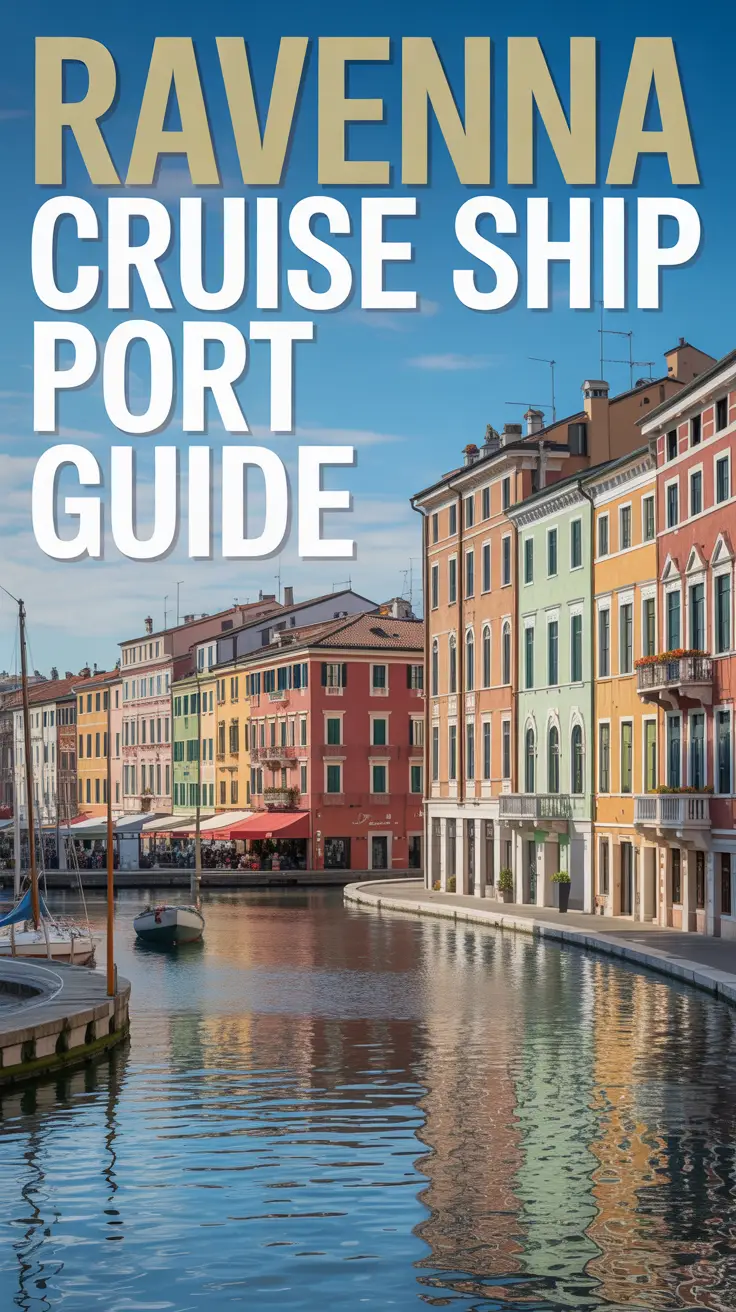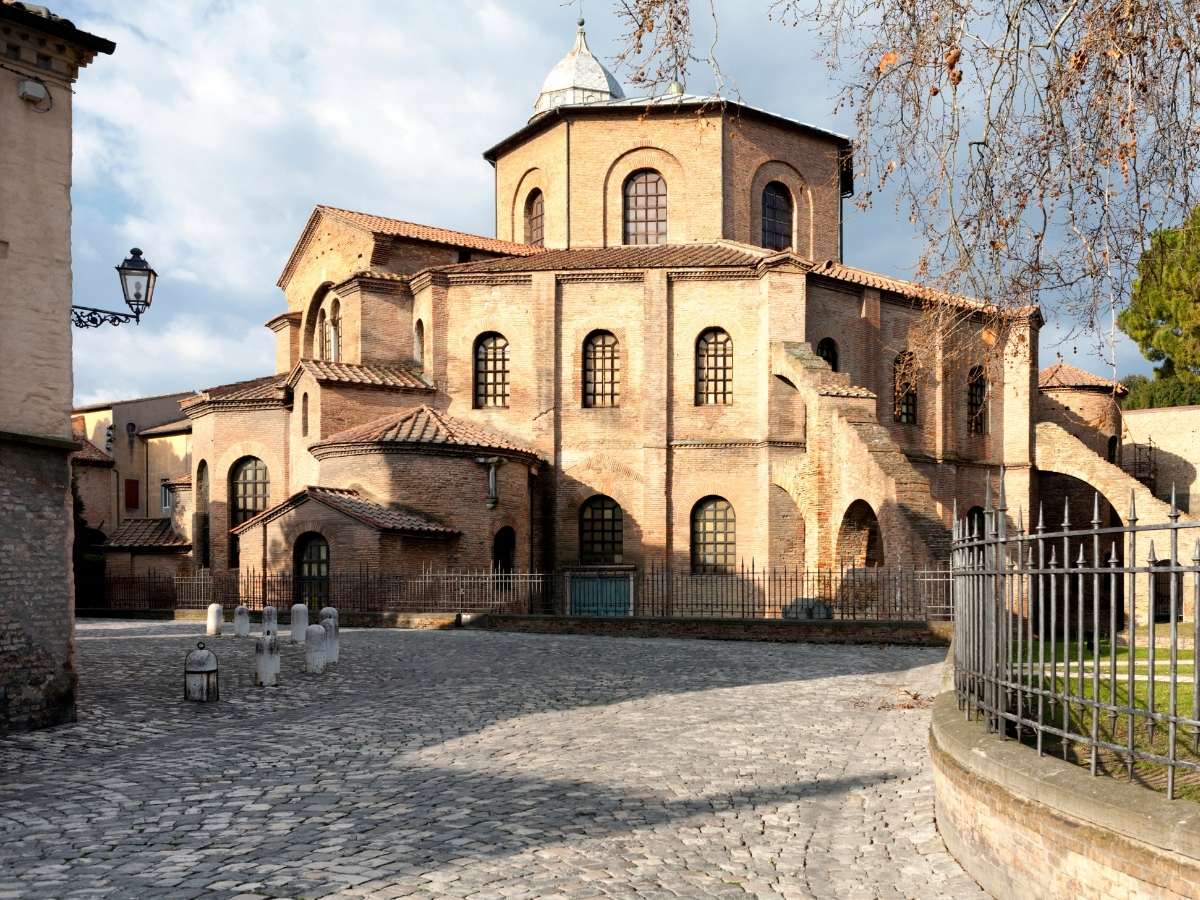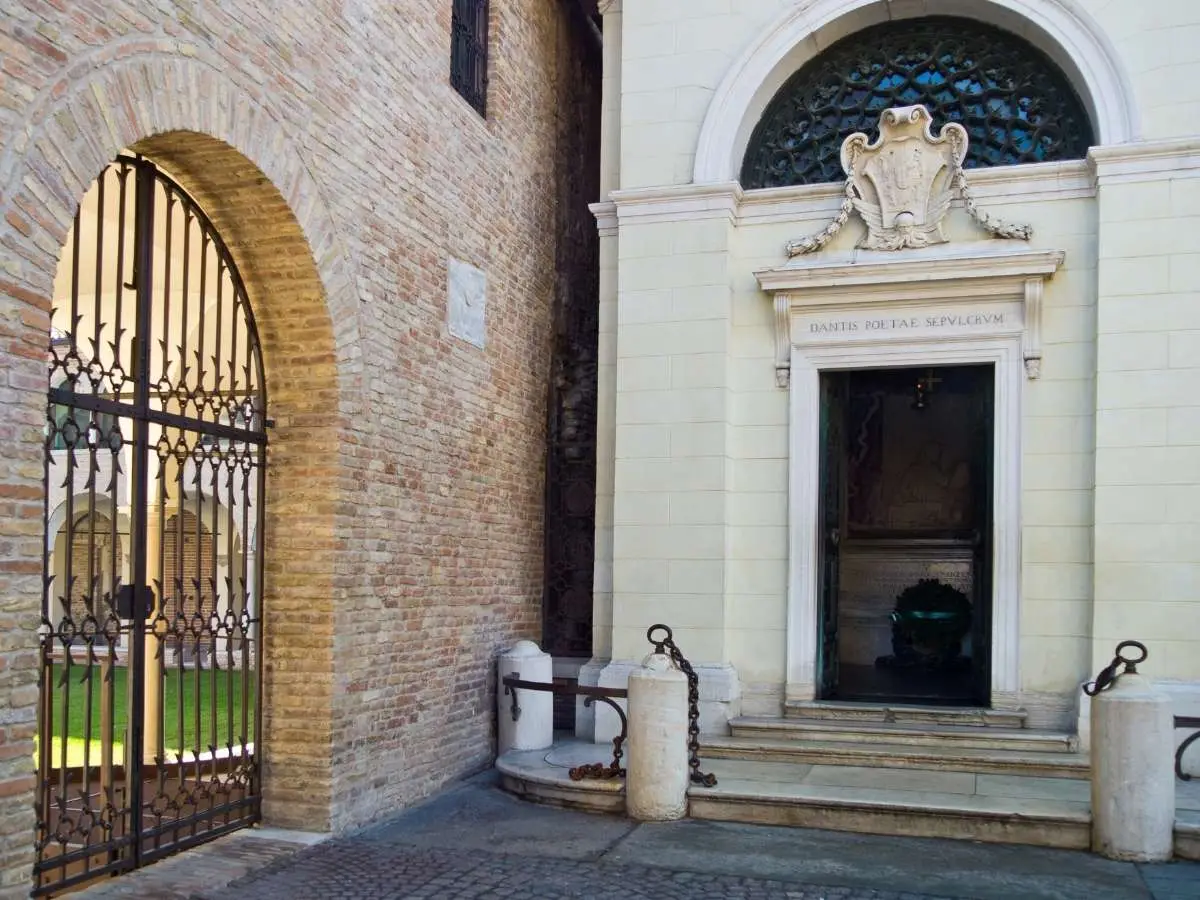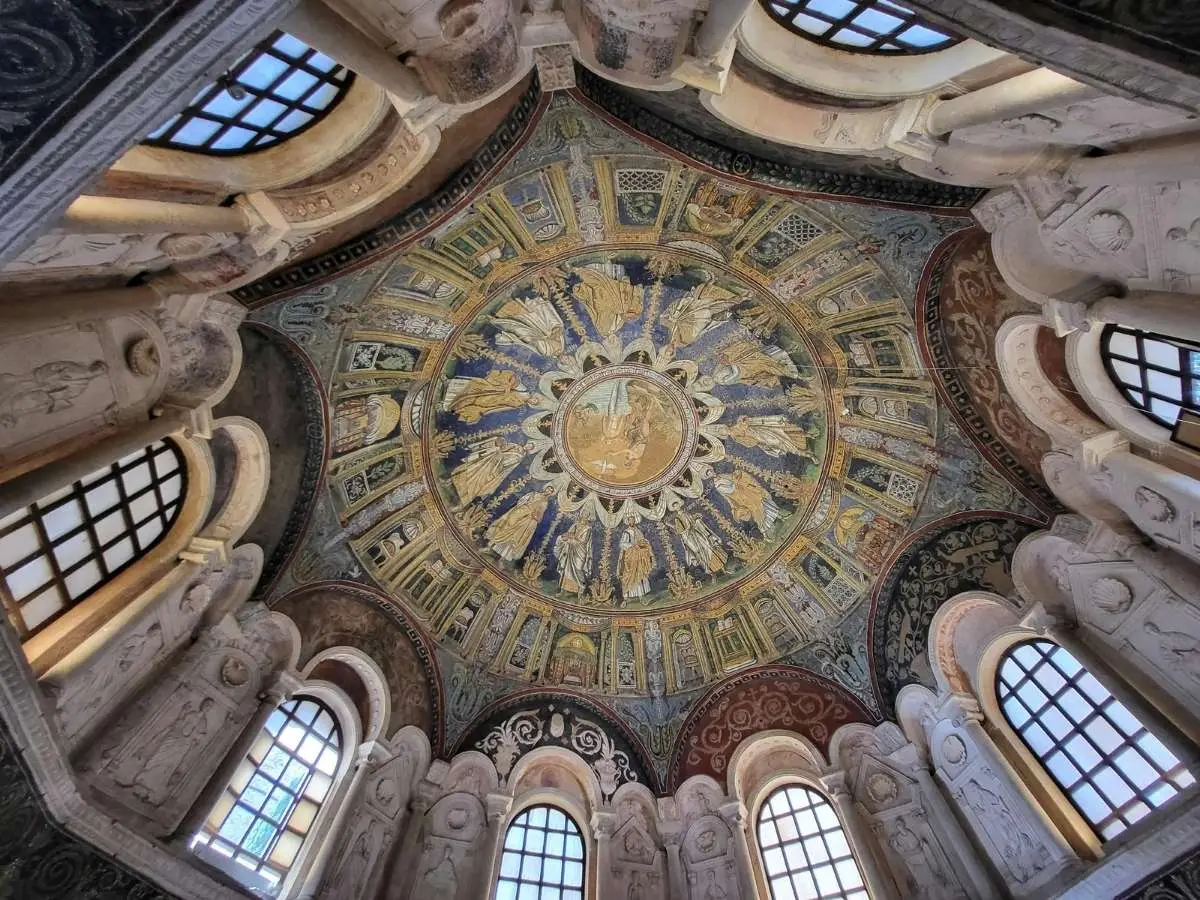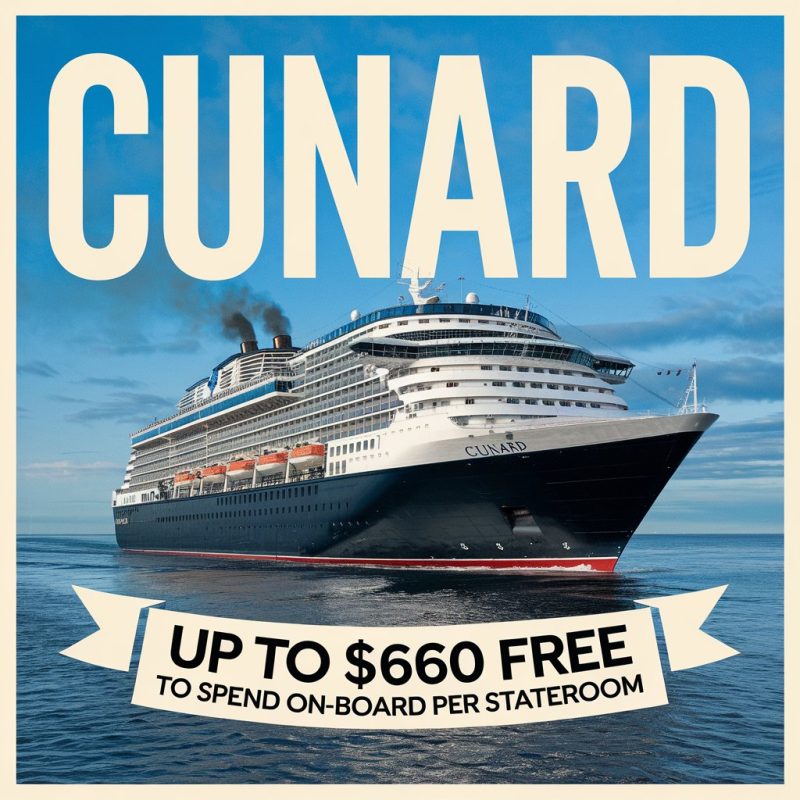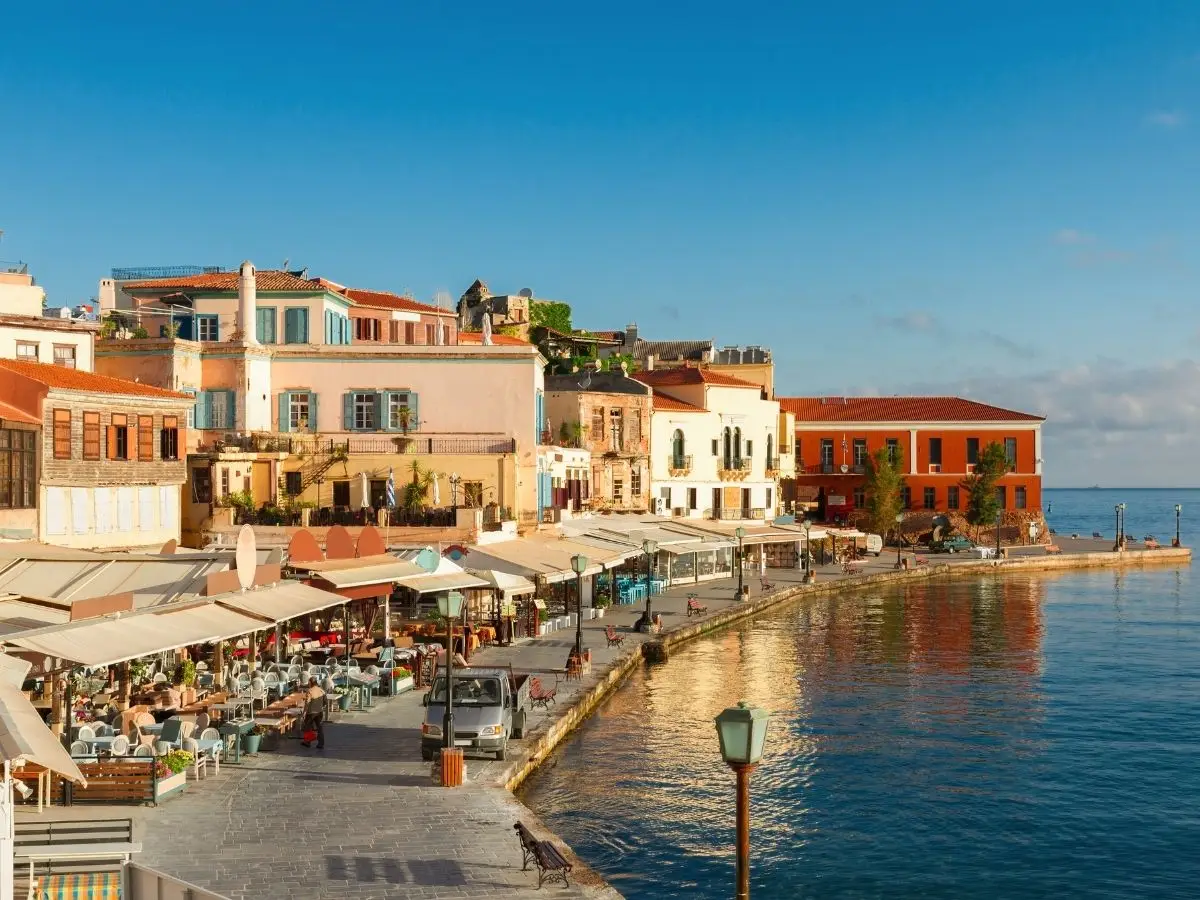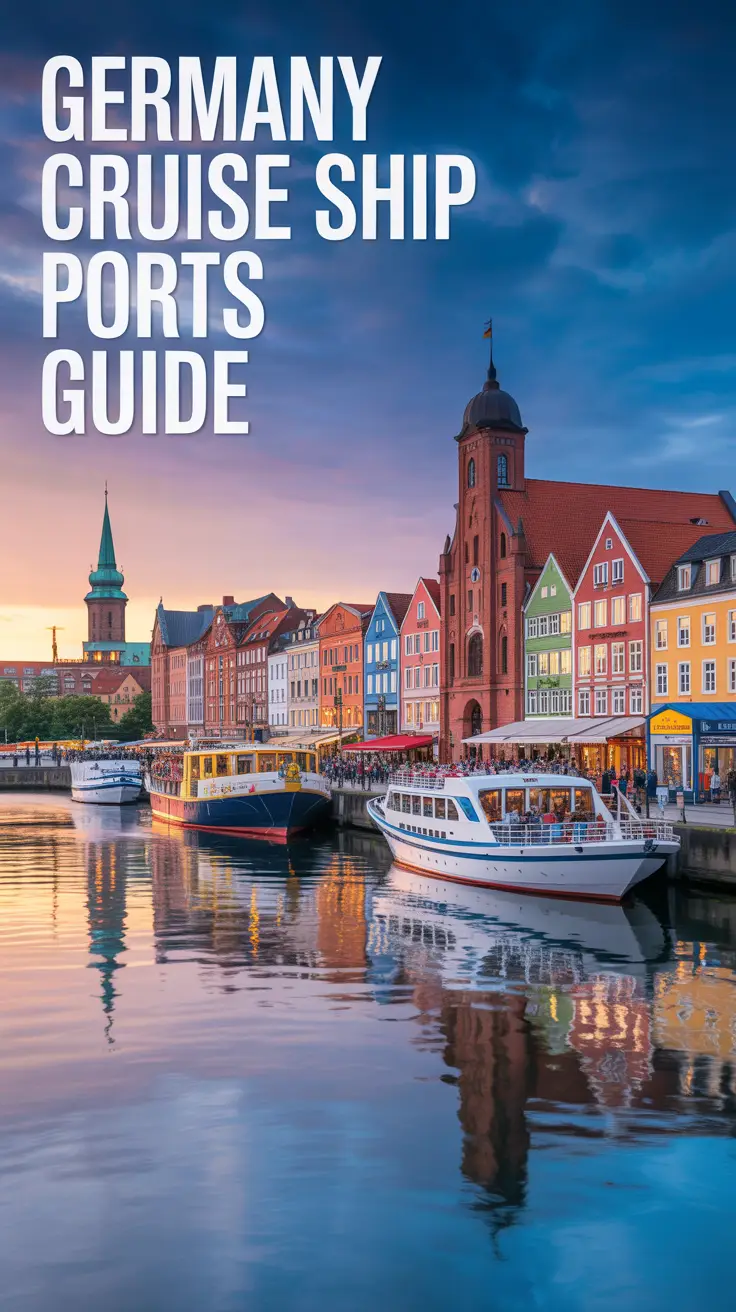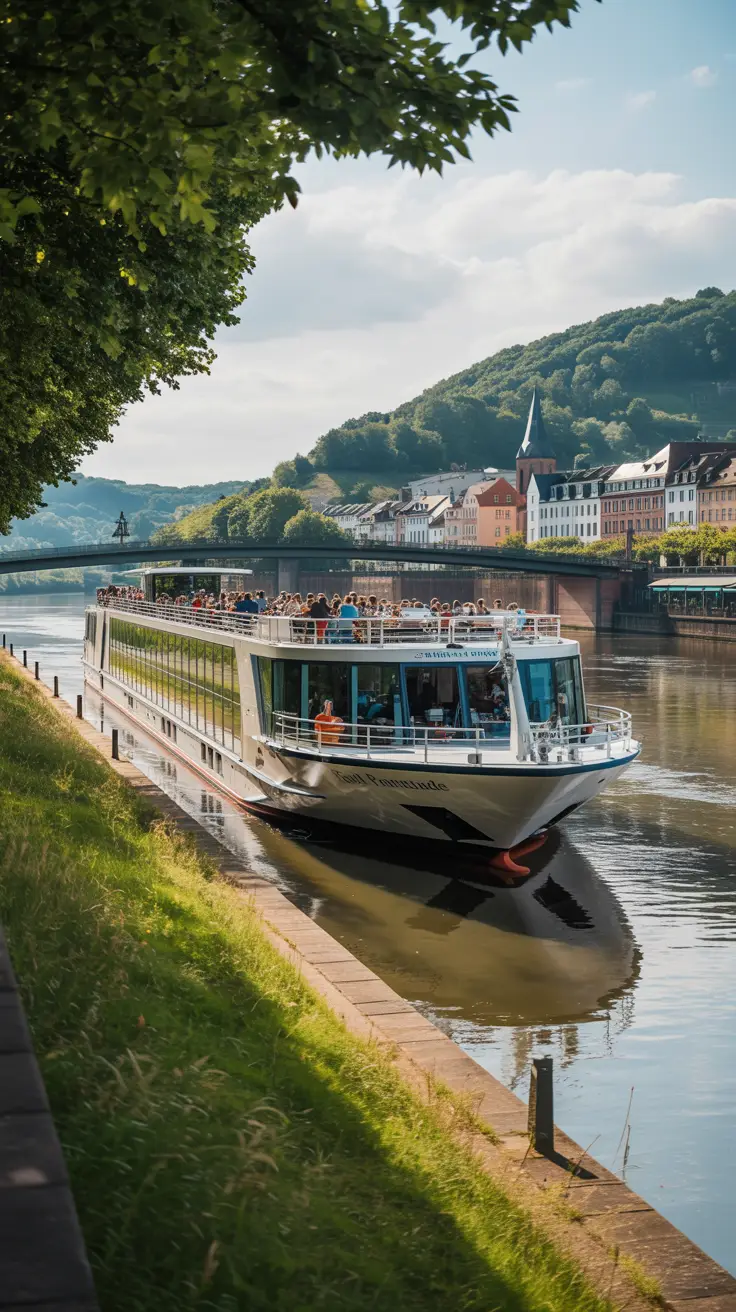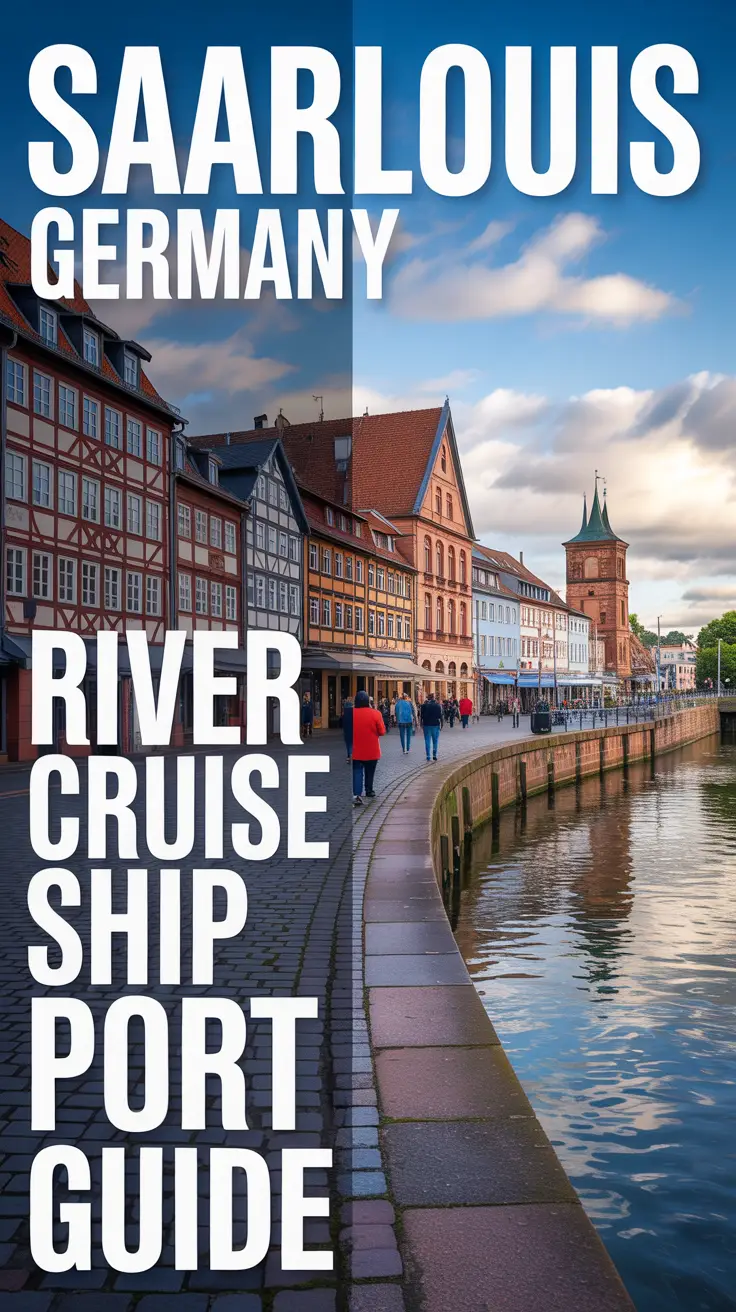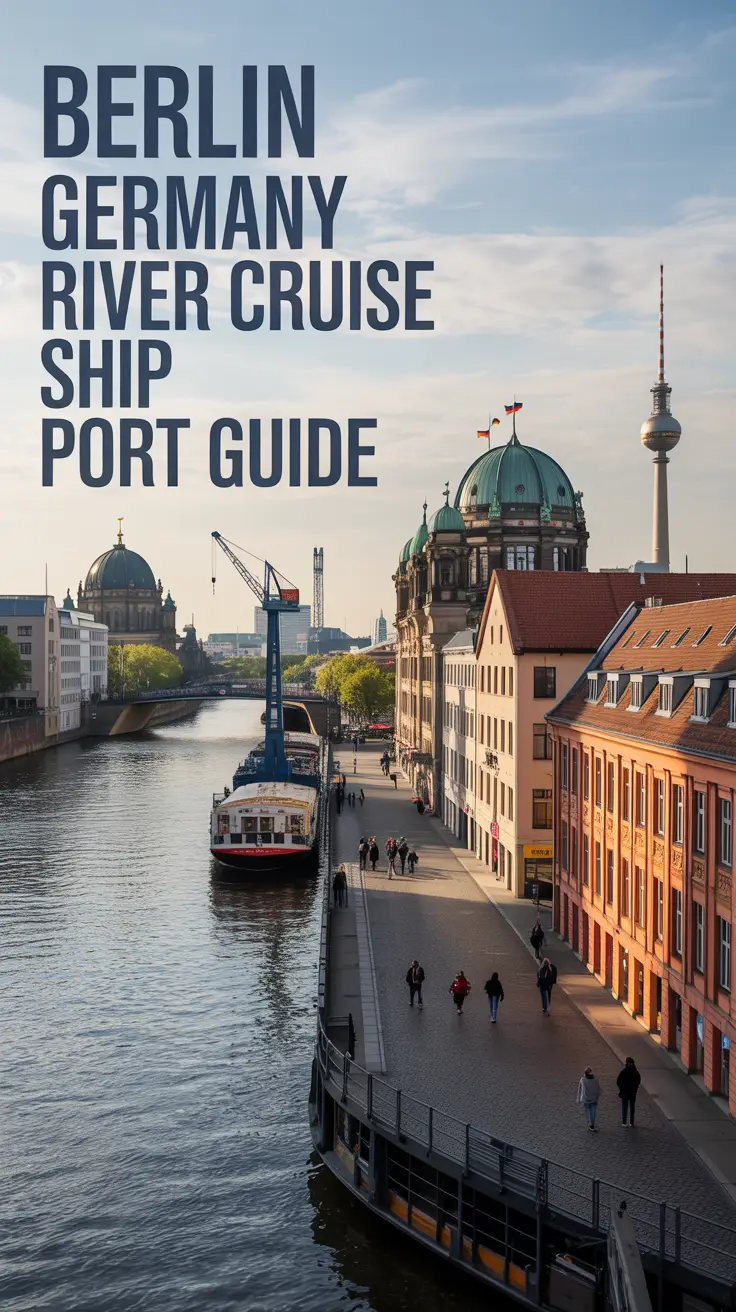Ravenna serves as a cruise port for exploring Italy’s Adriatic coast, located about 5 miles from the city center. Ships dock at Porto Corsini, requiring a shuttle or taxi to reach Ravenna’s historic center, famous for its stunning Byzantine mosaics and eight UNESCO World Heritage sites, including the Basilica of San Vitale.
Quick Facts
| Detail | Information |
|---|---|
| Port Name | Porto Corsini |
| Distance to City Center | 10 km (approximately 6 miles) |
| Transportation Options | Cruise shuttle, taxi, local bus |
| Shuttle Cost | €10-15 round trip |
| UNESCO Sites | Eight monuments |
| Time Needed for Visit | 4-6 hours minimum |
| Main Attractions | Byzantine mosaics, basilicas, mausoleums |
| Port Facilities | Basic, industrial area |
I just got back from a cruise that stopped in Ravenna, and I have to say, this port really surprised me. The terminal itself is pretty industrial and about 10 kilometers from the city center, so don’t expect to just walk off the ship into charming streets. Most cruise lines offer a shuttle bus, which costs around 10-15 euros round trip, but it’s absolutely worth it. The bus drops you near the historic center, and from there everything is walkable. I grabbed a map at the tourist office right by the bus stop, which helped me navigate the narrow streets to all the main sites.
The Byzantine mosaics are the real reason to visit Ravenna, and they’re honestly breathtaking. I hit the Basilica di San Vitale and the Mausoleum of Galla Placidia first thing, and the colors in those ancient mosaics still blow my mind. They’re over 1,500 years old but look like they could have been finished yesterday. For lunch, I found a little trattoria called Ca’ de Ven near Piazza del Popolo that served amazing piadina, which is like a local flatbread sandwich. The whole visit took about five hours including lunch, and I made it back to the ship with plenty of time to spare. Just keep an eye on when the last shuttle leaves – you don’t want to miss that!
Want to know more about other Mediterranean cruise ports along Italy’s Adriatic Sea? Check out our comprehensive guide to help you plan your entire itinerary.
Getting from Porto Corsini to Ravenna City Center
The port at Porto Corsini is functional but frankly pretty uninspiring. It’s a working commercial port that happens to welcome cruise ships, not a fancy passenger terminal. Here’s what you need to know about getting into town:
Cruise Line Shuttle Bus
- Most convenient option for first-time visitors
- Runs on a set schedule coordinated with ship departure times
- Drops you at or near Piazza Farini, walking distance to everything
- Return times are clearly marked – don’t miss the last one
- Book through your cruise line before disembarking
- Usually operates every 30-60 minutes depending on passenger demand
Taxi Service
- Fixed fare to city center typically €20-30 each way
- Can accommodate 4 passengers
- Good option if you’re traveling with family or want flexibility
- Negotiate fare before getting in or ensure meter is running
- Return taxis can be called or found at taxi stands near the train station
- Keep your driver’s number for the return journey
Public Bus
- Local bus line 70 connects Porto Corsini to Ravenna
- Cheapest option at around €2 per person
- Less reliable timing and may not align with ship schedules
- Requires some Italian language skills or good navigation apps
- Not recommended if you’re short on time or uncomfortable with public transport in foreign countries
👉 👉 Book shore excursions in Ravenna direct and save
The Eight UNESCO World Heritage Sites
Ravenna holds the remarkable distinction of having eight separate monuments recognized as UNESCO World Heritage sites. These aren’t scattered across the region either – they’re all clustered in the compact historic center, making it possible to visit several in a single day.
Must-See Monuments
Basilica di San Vitale
- The crown jewel of Ravenna’s Byzantine art
- Built in the 6th century and absolutely spectacular
- Famous mosaics depicting Emperor Justinian and Empress Theodora
- The octagonal design influenced architecture for centuries
- Combined ticket available with Mausoleum of Galla Placidia
- Allow 45-60 minutes for a proper visit
Mausoleum of Galla Placidia
- Small but incredibly impressive interior
- The midnight blue ceiling covered in golden stars will take your breath away
- Built as a chapel but legend says it was meant as a tomb
- Only about 20 people fit inside at once so expect queues
- Located right next to San Vitale – visit both together
- The lighting is deliberately dim to protect the ancient mosaics
Basilica di Sant’Apollinare Nuovo
- Features the longest mosaic cycle in Ravenna
- Depicts a procession of saints along both walls
- Originally built as an Arian church, later converted to Catholic
- The bell tower is a later addition but offers great views if open
- Less crowded than San Vitale, giving you more breathing room
Neonian Baptistery
- Oldest monument in Ravenna, dating to the early 5th century
- Beautiful dome mosaic showing the baptism of Christ
- Originally built as Roman baths, converted to baptistery
- Small space so visits are quick but impactful
- Located near the cathedral in the heart of the old town
Arian Baptistery
- Built for followers of Arianism, a branch of Christianity
- Similar dome decoration to the Neonian but with theological differences
- Smaller and often quieter than other sites
- Interesting for comparing with the Orthodox baptistery
Archbishop’s Chapel
- Tiny private chapel in the Archbishop’s Palace
- Only example of an early Christian private chapel still intact
- Contains some of the oldest mosaics in Ravenna
- Access through the Archiepiscopal Museum
Mausoleum of Theodoric
- Located about 1 kilometer from the city center
- Built entirely from Istrian stone with no mosaics
- The massive roof stone weighs 300 tons and was transported from Croatia
- Unique two-story structure unlike other Ravenna monuments
- If you’re short on time, this one can be skipped in favor of the mosaic sites
Basilica di Sant’Apollinare in Classe
- Located 5 kilometers outside Ravenna in the suburb of Classe
- Requires separate transport (taxi or local bus)
- Stunning apse mosaic considered among the finest in Italy
- Large, peaceful basilica with fewer tourists
- Only visit if you have 6+ hours in port
Practical Tips for Visiting the Monuments
Here’s something most guidebooks won’t tell you: buying individual tickets to each site will cost you a fortune and waste precious port time standing in multiple queues. Instead, grab the combo ticket.
Ticket Options
- Combined ticket: Covers five main sites (San Vitale, Galla Placidia, Sant’Apollinare Nuovo, Neonian Baptistery, and Archbishop’s Chapel) for approximately €11
- Individual tickets: Around €10 per site – do the math and you’ll see why the combo is better
- Where to buy: Purchase at any of the included monuments or the information office
- Validity: Good for seven days but you’ll use it in a few hours
- Book ahead: During peak cruise season, booking online can save queue time
👉 👉 Book shore excursions in Ravenna direct and save
Insider Timing Strategy
Most cruise ship excursions hit San Vitale around 10:30-11:00 AM, creating massive crowds. If you take an early shuttle into town, you can beat the tour groups. Here’s the smart play:
- Arrive by 9:00 AM if possible
- Hit San Vitale and Galla Placidia first when they’re quiet
- The lighting is better in the morning anyway for photography
- Move to Sant’Apollinare Nuovo around 11:00 when crowds shift
- Take a lunch break from 12:30-2:00 when sites get packed
- Visit remaining sites in the afternoon
- Head back to the shuttle pickup by 3:30-4:00 PM
Beyond the Mosaics: Other Things to See and Do
While the Byzantine monuments are absolutely the main event, Ravenna has a few other attractions worth considering if you have extra time.
Dante’s Tomb
- The famous poet died in Ravenna and is buried here
- Small, simple tomb but significant for literature lovers
- Free to visit and takes only 10 minutes
- Located near San Francesco basilica
- Florence has been trying to get his remains back for 700 years
Piazza del Popolo
- Main square and heart of local life
- Surrounded by cafes perfect for people-watching
- Two Venetian columns from the 1400s
- Good meeting point if your group splits up
Mercato Coperto (Covered Market)
- Historic market hall renovated into a food court
- Local specialties, wine, coffee and quick meals
- More authentic and cheaper than touristy restaurants
- Great place to grab supplies for the ship
- Open daily with extended hours
Via Cavour and Via IV Novembre
- Main shopping streets lined with boutiques
- Mix of Italian brands and local shops
- Good for picking up ceramics with mosaic designs
- Better quality and prices than port tourist shops
Where to Eat in Ravenna
The local cuisine is influenced by both the nearby Adriatic and the agricultural Romagna region. You’ll find seafood alongside hearty pastas and meat dishes.
Local Specialties to Try
- Piadina: Flatbread sandwich filled with cheese, prosciutto, arugula or other fillings
- Cappelletti in brodo: Small filled pasta in rich broth
- Passatelli: Breadcrumb pasta, sounds weird but tastes amazing
- Strozzapreti: Hand-rolled pasta with various sauces
- Adriatic fish: Fresh catch prepared simply with olive oil and lemon
Restaurant Recommendations
- Ca’ de Ven: Housed in a 16th-century warehouse, this place is a local institution. The piadina is legendary and they serve it with local Sangiovese wine. It gets packed at lunch so arrive before noon or after 1:30 PM. The atmosphere alone is worth the visit with vaulted ceilings and wine bottles lining the walls.
- Osteria del Tempo Perso: Tucked down a side street, this family-run spot serves traditional Romagna dishes. The handmade pasta is excellent and portions are generous. Prices are reasonable and the staff is welcoming to tourists who make the effort to find them.
- La Piadina del Melarancio: If you’re in a rush, this piadineria near Piazza del Popolo makes quick, delicious and cheap flatbreads to go. Perfect for eating while walking between monuments.
- Mercato Coperto: As mentioned earlier, the covered market has multiple food stalls serving everything from seafood to traditional pasta. It’s casual, fast and gives you a taste of several specialties without committing to a sit-down meal.
Shopping for Souvenirs
Ravenna’s unique artistic heritage means you can find souvenirs here that you won’t see anywhere else on your cruise.
What to Buy
- Mosaic reproductions: Everything from small magnets to museum-quality art pieces
- Mosaic jewelry: Locally made earrings, pendants and bracelets using traditional techniques
- Ceramic plates and tiles: Decorated with mosaic-inspired patterns
- Romagna wines: Sangiovese, Albana and Trebbiano from nearby vineyards
- Local honey and preserves: From the surrounding countryside
- Books about Byzantine art: Excellent selections in museum shops
Where to Shop
- Museum shops: Higher quality than street vendors with authentic pieces
- Bottega d’Arte Gaspare Mosaici: Working mosaic studio where you can watch artisans
- Mercato Coperto: Food products and local specialties
- Via Cavour shops: Italian fashion and leather goods
Pro tip: Skip the mass-produced mosaic items sold by street vendors near the main sites. The museum shops and dedicated mosaic studios sell genuine local work at only slightly higher prices. You’re supporting actual artisans and getting something that will last.
DIY vs. Shore Excursions
This is one of those ports where going independent makes a lot of sense for most travelers. The city is compact, well-signed in English and the main attractions are obvious. That said, shore excursions have their place. For information on booking your cruise excursions, check out our detailed guide.
Reasons to Book a Shore Excursion
- Guarantee you won’t miss the ship (excursion delays are covered)
- Expert guide explaining the religious and historical significance of the mosaics
- Skip-the-line access at popular sites
- Transportation included without thinking about it
- Visiting Sant’Apollinare in Classe which is harder to reach independently
- Mobility issues that make independent travel difficult
Reasons to Go Independent
- Significantly cheaper – shuttle plus entry fees versus €70-100 excursion price
- Move at your own pace without being rushed
- Choose which monuments matter most to you
- Flexible lunch options instead of tourist restaurant stops
- Opportunity to wander the quieter streets and discover hidden corners
- Time for shopping or coffee breaks
👉 👉 Book shore excursions in Ravenna direct and save
Challenges and Things to Watch Out For
Let’s be honest about some of the less-than-perfect aspects of Ravenna as a port stop.
The Port Itself
Porto Corsini is industrial and not particularly attractive. There’s essentially nothing at the port except the ship. No shops, no cafes, no beach nearby. You absolutely must go into Ravenna itself to have anything to do. Don’t expect to split your group with some staying at a “beach by the ship” – it doesn’t work that way here.
Distance and Transportation
The 10-kilometer distance to town is manageable but does eat into your port time. Budget at least 20-30 minutes each way for the shuttle ride, and add waiting time if shuttles are delayed. If you’re only in port for 6-8 hours, you’re realistically looking at 4-5 hours in the city itself.
Crowds During Peak Season
When multiple ships are in port simultaneously or during Italian holiday periods, the small monuments can feel claustrophobic. The Mausoleum of Galla Placidia is particularly challenging as only about 20 people fit inside. You might wait 15-20 minutes to enter during busy times.
Limited Dining Options Near Monuments
Many restaurants in the immediate tourist zone are mediocre and overpriced. You’ll need to walk a few blocks away from the main sites to find authentic spots where locals eat. Ask your shuttle driver or the tourist office staff for current recommendations.
August Closures
Many local businesses close for vacation in August, though major monuments stay open. Restaurant choices may be more limited and some shops shuttered.
Weather Considerations
Summer temperatures can be brutal, especially inside the churches where there’s no air conditioning. The mosaics are best viewed in natural light so the interiors can be stifling. Bring water and take breaks. Conversely, winter visits can be cold and damp with reduced daylight hours.
Bonus Tips Only Cruise Regulars Know
Here are some insider tricks that will make your Ravenna visit smoother and more enjoyable.
Photography Tips
- Photography is allowed in most monuments but no flash
- Bring a camera that handles low light well
- Morning light through the windows at San Vitale is spectacular
- The mosaic colors are so vibrant that phone cameras actually capture them well
- Avoid using zoom – get closer instead for better detail
- The gift shops sell postcards that show details better than you can photograph
Bathroom Strategy
Public restrooms are scarce in Ravenna’s historic center. The cleanest options are inside the monuments themselves (San Vitale has facilities) or in cafes where you order a coffee. The train station has public bathrooms if you’re desperate but they’re not convenient to the main sites.
WiFi Access
Free WiFi is available in Piazza del Popolo and some other public squares. Most cafes offer WiFi to customers. Download offline maps before leaving the ship since cellular data can be expensive if you’re not on an international plan.
ATM and Money
Several ATMs are located near Piazza del Popolo and along Via Cavour. Most restaurants and shops accept cards but small purchases like market food or street snacks may require cash. The shuttle bus and taxis should accept cards but cash is more reliable.
Dress Code
These are active religious sites and modest dress is required. Shoulders and knees must be covered in churches. Enforcement varies but you risk being turned away. Bring a light scarf or wrap if you’re wearing a sundress or tank top – it’s easier than changing clothes.
The Secret Free Attraction
The Basilica di San Francesco is not part of the UNESCO collection but contains a fascinating flooded crypt. Drop a coin in the slot and lights illuminate the ancient mosaic floor beneath clear water where goldfish swim. It’s free, quick and totally unique. Located right next to Dante’s Tomb.
Language
English is spoken at major monuments and tourist restaurants but less so in local spots. Basic Italian pleasantries go a long way. Download Google Translate before leaving the ship and use it to read menus and signs.
Best Photo Op Nobody Knows About
The quiet courtyard garden behind the Archbishop’s Palace is gorgeous and almost always empty. Perfect for a peaceful moment away from the crowds.
Ravenna in Context: Comparing Adriatic Ports
If you’re cruising the Adriatic, you might be stopping at several Italian ports. Here’s how Ravenna compares to help you prioritize your time and energy. For more details, check out our guides to Mediterranean cruise ports in Italy and Mediterranean cruise ports in Croatia.
| Port | Distance to City | Main Attraction | Time Needed | Difficulty Level |
|---|---|---|---|---|
| Ravenna | 10 km | Byzantine mosaics | 4-6 hours | Easy |
| Venice | Varies | Canals, St. Mark’s | 8+ hours | Moderate |
| Trieste | Walking distance | Miramare Castle | 4-5 hours | Easy |
| Ancona | Walking distance | Historical center | 3-4 hours | Easy |
| Bari | Walking distance | Old town, basilica | 4-5 hours | Easy |
Ravenna offers something completely different from typical coastal ports. While Venice gives you canals and Split offers Diocletian’s Palace, Ravenna provides the best Byzantine art outside of Istanbul. It’s art history rather than beach time, culture rather than cuisine focus. If you appreciate art and history, this stop will be a highlight. If you’re looking for shopping and beaches, you might be disappointed.
Is Ravenna Worth It?
The honest answer depends on your interests. For art lovers, history buffs and anyone interested in Byzantine culture or early Christianity, Ravenna is absolutely extraordinary. These mosaics are genuinely world-class, and seeing them in their original settings rather than in museums is powerful. The UNESCO recognition is well-deserved, and you’ll understand why these monuments have been protected and preserved for 1,500 years.
For travelers looking for Italian charm, great food and leisurely strolling, Ravenna delivers on a modest scale. It’s a pleasant Italian city with good restaurants and friendly locals, but it’s not going to wow you the way Rome or Florence might. The city center is nice but not spectacular.
For beach lovers, shoppers and those seeking vibrant nightlife, Ravenna will feel like the weakest stop on your itinerary. The port location means you can’t pop back to the ship easily, and there’s nothing maritime or beachy about the experience despite being on the Adriatic coast.
My take: If your cruise stops in Ravenna, absolutely go into the city and see the mosaics. They’re remarkable and unlike anything else you’ll see on a typical Mediterranean cruise. But I probably wouldn’t choose a cruise specifically because it stops in Ravenna – it’s a worthwhile bonus rather than a headline attraction. The distance from the port to the city is the main drawback, but the monuments themselves justify the effort.
Sample Itineraries by Port Time
4-5 Hours in Port
This is tight but doable if your ship docks early:
- 8:00 AM – Take first shuttle to Ravenna
- 8:30 AM – Arrive, walk to San Vitale (10 minutes)
- 8:45 AM – Visit San Vitale and Galla Placidia (90 minutes)
- 10:15 AM – Quick coffee break
- 10:30 AM – Sant’Apollinare Nuovo (45 minutes)
- 11:15 AM – Grab piadina to go from market
- 11:45 AM – Quick walk through Piazza del Popolo
- 12:00 PM – Return shuttle to ship
6-7 Hours in Port
Comfortable timing for the main highlights:
- 9:00 AM – Shuttle to Ravenna
- 9:30 AM – San Vitale and Galla Placidia (90 minutes)
- 11:00 AM – Neonian Baptistery (20 minutes)
- 11:30 AM – Dante’s Tomb and San Francesco crypt (20 minutes)
- 12:00 PM – Lunch at Ca’ de Ven or similar (90 minutes)
- 1:30 PM – Sant’Apollinare Nuovo (45 minutes)
- 2:15 PM – Shopping and wandering (45 minutes)
- 3:00 PM – Return shuttle
8+ Hours in Port
Leisurely visit with everything included:
- 9:00 AM – Shuttle to Ravenna
- 9:30 AM – All five combo ticket monuments (3 hours with breaks)
- 12:30 PM – Proper sit-down lunch (90 minutes)
- 2:00 PM – Shopping and exploring (1 hour)
- 3:00 PM – Taxi to Sant’Apollinare in Classe (30 minutes)
- 3:30 PM – Visit basilica (45 minutes)
- 4:15 PM – Taxi back to city (30 minutes)
- 4:45 PM – Coffee and gelato (30 minutes)
- 5:15 PM – Return shuttle
Connections to Other Destinations
Ravenna works well as part of a broader Adriatic cruise itinerary. If you’re sailing this region, you might also visit ports along both the Italian and Croatian coasts. Our guide to Western Mediterranean cruise ports and Eastern Mediterranean cruise ports provides comprehensive information on planning your cruise route.
Nearby Italian Ports
Many Adriatic itineraries combine Ravenna with Genoa or Savona as embarkation points, then sail down the coast stopping at Venice, Ravenna, Ancona and Bari before crossing to Croatia and Greece.
Cultural Themes
Ravenna’s Byzantine heritage connects thematically to other eastern Mediterranean destinations. If your cruise continues to Greece or Turkey, you’ll see the artistic and religious connections between Ravenna’s mosaics and later Byzantine work in Athens, Istanbul and other eastern cities.
Common Questions and FAQ
Can you walk from the cruise port to Ravenna city center?
Technically yes, but it’s 10 kilometers along an uninspiring industrial road with limited sidewalks. It would take over two hours each way and isn’t safe or practical. Take the shuttle or a taxi instead.
Is there a beach near the cruise terminal at Porto Corsini?
The beaches near the port are narrow, pebbly and backed by industrial facilities. They’re not suitable for a beach day. If you want Adriatic beaches, other ports like Split or Bari are better choices.
How much time do I need for Ravenna’s main attractions?
Four to five hours is minimum to see the top three or four monuments and grab lunch. Six to seven hours is comfortable for most of the UNESCO sites plus some wandering. Eight hours allows a thorough visit including the outlying basilica at Classe.
Are the mosaic sites wheelchair accessible?
Accessibility varies by monument. San Vitale has some steps but alternate routes are available. The Mausoleum of Galla Placidia has significant steps. Sant’Apollinare Nuovo is relatively flat. Contact the tourist office in advance for specific accessibility information, and consider booking a shore excursion that can accommodate mobility needs.
What’s the best time of year to visit Ravenna?
Spring (April-May) and fall (September-October) offer the best combination of pleasant weather and manageable crowds. Summer is hot and busy. Winter is quiet but cold, though the indoor nature of the attractions makes it workable.
Can I use euros in Ravenna?
Yes, Italy uses the euro. Credit cards are widely accepted but bring some cash for small purchases, market food and tips.
Do I need to book monument tickets in advance?
Not strictly necessary except during peak summer season or when multiple cruise ships are in port simultaneously. However, advance booking can save queue time even when tickets are available. Check the official tourist website for current ticket availability.
Is there luggage storage in Ravenna?
The train station offers luggage storage if you’re joining or leaving your ship in Ravenna. There’s no storage at the cruise port itself and monuments don’t have facilities for large bags.
Can I visit Ravenna independently if I don’t speak Italian?
Absolutely. The city is tourist-friendly with English signage at monuments and many people speaking at least basic English. The tourist office provides excellent English-language maps and information. The compact historic center is easy to navigate even without language skills.
What should I wear to visit the churches?
Modest clothing is required – shoulders and knees covered. Comfortable walking shoes are essential as you’ll be on your feet for hours on cobblestone streets. In summer, wear light, breathable fabrics as the churches can be warm. In winter, layer as the stone buildings hold the cold.
Are there any local festivals or events to be aware of?
The Ravenna Festival runs May through July, featuring opera, concerts and performances in historic venues. During festival periods, the city is busier and accommodation scarce, but the cultural energy is wonderful. Some venues may have restricted hours due to rehearsals or performances. Check the festival schedule when planning your visit.
Can children enjoy Ravenna?
Older children and teens interested in art and history will appreciate the mosaics. Younger children may find the monuments boring after the first one or two. The compact center makes it easy to keep kids together, and there are gelato shops to break up the cultural visits. Consider mixing mosaic sites with time in the public squares where kids can move around freely.
What happens if I miss the last shuttle back to the ship?
You’ll need to take a taxi back to Porto Corsini, which will cost €25-35. Keep the port agent’s phone number and your ship’s departure time clearly noted. Cruise lines warn about shuttle times repeatedly for good reason. Set an alarm on your phone for 90 minutes before the last shuttle to give yourself time to wrap up and walk back to the pickup point.
Is Ravenna safe for tourists?
Ravenna is very safe with low crime rates typical of smaller Italian cities. Petty theft like pickpocketing is uncommon but not unheard of in crowded monument spaces. Use common sense, watch your belongings and you’ll have no problems. The walk from the shuttle drop-off to the monuments takes you through busy commercial streets that are perfectly safe.

